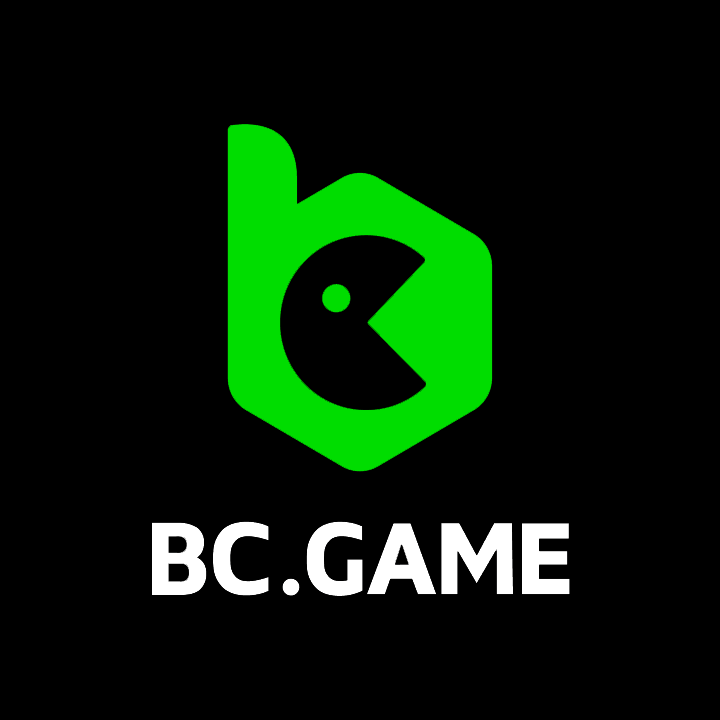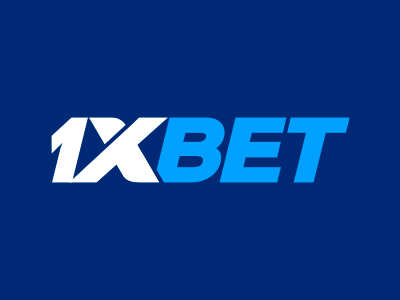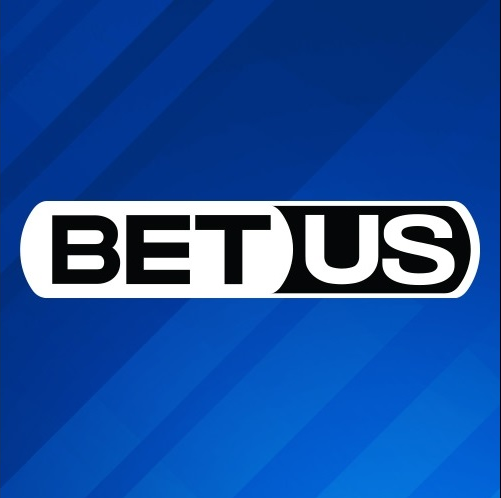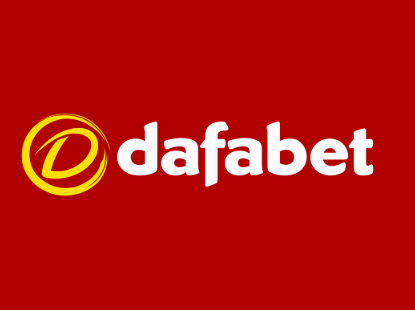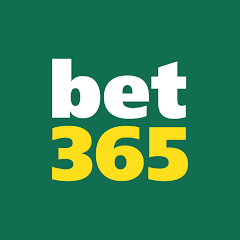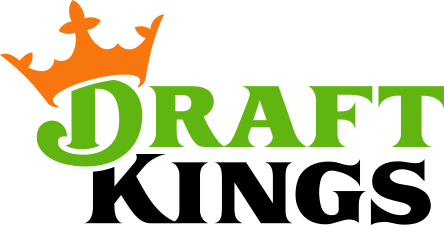There's something uniquely compelling about baseball betting. Maybe it's the 162-game marathon that rewards patience and pattern recognition. Maybe it's the statistical depth sabermetrics has given us insights our grandfathers never imagined. Or maybe it's just that warm summer evening when your underdog moneyline hits in extra innings.
But here's the reality: most recreational bettors approach MLB baseball like they're throwing darts blindfolded. They chase big favorites at -200. They panic-bet the Yankees because, well, they're the Yankees. They ignore starting pitching matchups and wonder why their bankroll evaporates by the All-Star break.
Core Betting Markets Explained: Your MLB Arsenal
1. Moneyline: The Pure Pick
The Concept: Strip away all the complexity. Who wins the game? That's it. Moneyline betting is baseball in its purest form you're simply picking the victor, regardless of the margin.
A Concrete Example: The Dodgers are hosting the Rockies. The board shows:
Dodgers: -175
Rockies: +155
You believe Colorado's starting pitcher has the platoon advantage and LA's bullpen is overworked. You wager $100 on the Rockies at +155. If Colorado wins, you collect your $100 stake plus $155 profit total return of $255. If they lose, you're out $100.
Strategic Context: Moneylines are where value hides in baseball. Unlike football or basketball, baseball doesn't have point spreads that level the playing field. Heavy favorites (anything beyond -200) offer terrible risk-reward ratios. In my experience analyzing thousands of MLB games, the sustainable profit lies in the +115 to +165 underdog range teams with a legitimate 35-45% win probability that the market underestimates. The beauty of baseball's sample size means variance evens out. You don't need to win 60% of your bets; at +150 average odds, 42% gets you profitable.
2. Run Line: The Spread with a Twist
The Concept: Baseball's version of point spread betting, almost always set at 1.5 runs. The favorite must win by 2+ runs; the underdog can lose by 1 run or win outright.
A Concrete Example: Same Dodgers-Rockies matchup:
Dodgers -1.5 (+115)
Rockies +1.5 (-135)
The run line flips the pricing. Suddenly the Dodgers, who were -175 on the moneyline, become slightly plus money at +115 if you believe they'll win convincingly. A $100 wager on Dodgers -1.5 returns $215 total if LA wins 5-3 or better.
Conversely, taking Rockies +1.5 at -135 means betting $135 to win $100, but you cash if Colorado wins outright OR loses 4-3, 2-1, etc.
Strategic Context: Run lines are where you separate casual bettors from strategic ones. Here's the key insight most miss: baseball games are historically low-scoring compared to other major sports. The average MLB game finishes with a combined 8-9 runs. This means one-run games happen constantly roughly 25-28% of all contests.
When do I take run lines? When backing a prohibitive favorite (anything -180 or worse on the moneyline), the run line offers escape from brutal juice. But and this is critical only when the matchup suggests a blowout: dominant ace starting pitcher, struggling opposing offense, or a bullpen disparity. Never take a run line just because the price looks pretty. That 1.5-run margin is massive in baseball.
3. Over/Under (Totals): The Pitcher's Duel or Slugfest
The Concept: The sportsbook sets a projected total for combined runs scored by both teams. You're betting whether the actual total goes Over or Under that number.
A Concrete Example: Red Sox vs. Blue Jays, total set at 9.5 runs:
Over 9.5 (-110)
Under 9.5 (-110)
You analyze the matchup: both starting pitchers have ERAs north of 5.00, it's a humid August night in Toronto (the ball flies), and both bullpens are depleted from recent extra-inning games. You hammer Over 9.5 with a $110 wager. If the game finishes 7-4 (11 total runs), you win $100 profit.
Strategic Context: Totals betting is where weather, ballparks, and pitching depth matter most. I've seen sharps make entire careers exploiting this market. The process is systematic: check wind direction and speed (10+ mph blowing out at Wrigley? Automatic Over consideration), evaluate the park factor (Coors Field vs. Oracle Park are different universes), and most importantly, assess not just the starters but the middle relief options.
A game can easily go Under through six innings with two aces dueling, then explode when the seventh-inning relievers enter. The smart money often waits until lineups are posted if a team's best hitter is getting a rest day, that tangibly impacts run expectancy.
4. Player Props: The Sabermetric Playground
The Concept: Bet on individual player performance home runs, total bases, strikeouts pitched, hits recorded. It's baseball's fastest-growing market and the most exploitable for analytically-minded bettors.
A Concrete Example: Shohei Ohtani Total Bases, set at 1.5:
Over 1.5 (-125)
Under 1.5 (+105)
You've researched the opposing starter: he's a right-handed pitcher who allows a .280 batting average to left-handed batters like Ohtani, and his fastball velocity is down 2 mph from last season. Ohtani needs just a double or two singles to cash Over 1.5 TB. You risk $125 to win $100.
Strategic Context: This is where casual fans get destroyed and dedicated analysts thrive. The books often misprice props because they're setting hundreds of lines per day. Your edge comes from drilling into niche splits: how does this hitter perform against this pitcher's primary pitch type (four-seam vs. slider)? What's the batter's ISO (Isolated Power) in day games versus night games?
The Analytical Framework: How to Handicap an MLB Match
This is where betting transforms from gambling to skill. Before I ever consider placing a wager, I systematically evaluate seven critical factors. Miss even one, and you're just guessing.
1. Starting Pitcher Matchup: The 70% Factor
Why It Matters: Baseball is unique among team sports one player controls roughly 70% of the game's outcome. An ace starting pitcher can single-handedly suppress an elite offense. Starting pitching isn't just important; it's the single most predictive variable in MLB betting.
How to Research It: Go beyond ERA. Check FIP (Fielding Independent Pitching), which removes defense and luck, giving you true pitching skill. Examine recent velocity readings on Brooks Baseball if a pitcher's fastball has dropped 2+ mph over his last three starts, injury concerns are real. Look at platoon splits: some pitchers are dominant against right-handed batters but mediocre against lefties.
Pro Insight: Pay attention to rest days. Starting pitchers on regular rest (4-5 days) versus short rest (3 days) show measurable performance decline roughly a half-run increase in ERA. Also, watch for "times through the order" stats. Many modern starters are brutally effective the first two times facing a lineup, then become batting practice the third time. If a team has a weak bullpen, that third-time-through-the-order degradation becomes hugely exploitable.
2. Bullpen Depth & Recent Workload
Why It Matters: Even if a starter dominates for six innings, the final 3-4 innings are a complete unknown. A gassed bullpen can turn a 4-1 lead into a 5-4 loss faster than you can refresh the score app.
How to Research It: Check each team's bullpen usage over the last 48 hours. Did the closer pitch in back-to-back games? Has the primary setup man thrown 30+ pitches in the last three days? Sites like FanGraphs publish daily "bullpen fatigue" metrics. Also, don't just look at overall bullpen ERA check recent form. A bullpen might have a stellar 3.20 season ERA but be running a 6.50 ERA over the last two weeks due to injuries or slumps.
Pro Insight: Thursday is the most exploitable day in MLB betting. After a long series where both bullpens are stretched thin, books often don't properly adjust totals. I've crushed Thursday day games by taking Overs when I know both teams' bullpens are running on fumes and the setup guys are unavailable.
3. Lineup Configuration & Platoon Advantages
Why It Matters: Not all lineups are created equal. A right-handed-heavy lineup facing a dominant righty starter is functionally neutered. Platoon disadvantages can suppress run scoring by 15-20%.
How to Research It: Check each team's projected lineup (posted about 2-3 hours before first pitch on team social media). Look for batters with extreme platoon splits guys who hit .280 against righties but .210 against lefties. Websites like Baseball Reference show these splits. Also identify if a team's best hitter is getting a rest day or if they're starting their backup catcher (a massive offensive downgrade).
Pro Insight: Some teams manipulate their lineups aggressively based on matchups the Tampa Bay Rays are notorious for this. They'll stack their lineup with left-handed batters if facing a right-handed starter with poor secondary pitches. Learning which managers actively optimize versus which run the same nine guys out daily gives you an informational edge most bettors ignore.
4. Ballpark Factors & Weather Conditions
Why It Matters: A 400-foot fly ball is a home run in Yankee Stadium and a routine out in Oracle Park. Where the game is played isn't cosmetic; it's fundamental to run scoring.
How to Research It: Memorize the extreme parks. Coors Field (Colorado) is a launching pad the thin air makes the ball fly and breaking pitches flatten out. Oracle Park (San Francisco) is a pitcher's haven with marine layer air keeping balls in play. Check day-of weather: wind blowing out at 12+ mph adds roughly 0.5-1.0 runs to expected totals. Temperature matters too balls fly better in 85°F heat than 55°F cold.
Pro Insight: The books adjust for obvious factors (everyone knows Coors is hitter-friendly), but they're slower to adjust for weather micro-changes. If the forecast shifted from 10 mph winds blowing in to 15 mph winds blowing out six hours before first pitch, the total might not have fully adjusted. That's your window. I've made a killing on live-betting Overs at Wrigley Field when afternoon wind patterns suddenly shift.
5. Recent Form & Momentum (But Not How You Think)
Why It Matters: Teams riding a 7-game winning streak aren't magically imbued with "momentum" this isn't basketball where confidence fuels hot shooting. But form tells you about current player health, which guys are slumping, and whether the lineup construction is working.
How to Research It: Look at underlying metrics, not just wins and losses. A team might be 3-7 in their last ten games but posting a .780 OPS (On-base Plus Slugging) and getting unlucky in close games that's actually a buy signal. Conversely, a 7-3 team might be winning ugly with a .680 OPS and due for regression. Check each team's recent run differential; it's far more predictive than win-loss record over small samples.
Pro Insight: Be wary of "letdown spots." If a team just completed an emotional series win against their division rival and now faces a mediocre opponent, they often play flat. Conversely, a team returning home after a brutal 1-6 road trip often plays with desperation the public sees the record and assumes they're cooked, but the contrarian angle can be profitable.
6. Umpire Impact: The Hidden Variable
Why It Matters: Home plate umpires have measurable impacts on run scoring. An umpire with a tight strike zone leads to more walks, higher pitch counts, and earlier bullpen entries. A generous strike zone favors pitchers.
How to Research It: Several sites (like UmpireScorecards on Twitter/X) track umpire tendencies average runs per game, called strike accuracy, and zone consistency. Before you place a total bet, check who's behind the plate. An umpire who historically calls 2-3% more strikes than average can shift an Over/Under by half a run.
Pro Insight: Umpires aren't consistent throughout the season. Like players, they slump. If an umpire is coming off a stretch where he's been publicly criticized or made high-profile bad calls, he often overcorrects by tightening up his zone the next few games. That nuance is invisible to the casual bettor but exploitable to those paying attention.
7. Divisional Familiarity & Series Context
Why It Matters: The Yankees and Red Sox play 13 times per season. By mid-August, they've seen each other's pitchers multiple times. Familiarity breeds adjustments hitters know what's coming, pitchers know hitter weaknesses. This impacts pricing.
How to Research It: Check season series records and run differentials in head-to-head matchups. Some teams just match up poorly against specific opponents due to stylistic reasons (a contact-heavy team struggles against ground ball pitchers, etc.). Also consider series context: is this the rubber match of a three-game set? Teams often empty the bullpen to avoid a series loss.
Pro Insight: The first game of a road trip or homestand is historically high-variance. Teams are adjusting to travel, time zones, and routine disruptions. I often fade public favorites in those spots the line hasn't adjusted for the logistical chaos, and underdogs cover at a higher rate.
Actionable Betting Strategies for Beginners
1. Bankroll Management: The Only Strategy That Truly Matters
Let me be blunt: you can be the world's greatest handicapper, but without bankroll discipline, you will go broke. I've watched brilliant analytical minds flame out because they risked 20% of their bankroll on a "lock."
The Framework: Your bankroll is your total dedicated betting fund money you can afford to lose without impacting your life. From this, you bet in "units." One unit should represent 1-2% of your total bankroll. If you have a $1,000 bankroll, one unit is $10-20.
For standard plays where you have slight confidence, bet 1 unit. For plays where your analysis gives you a significant edge (maybe 2-3 times per week), bet 2 units. Never, ever go beyond 3 units on a single game, regardless of how confident you feel.
Why This Works: Baseball's volatility is brutal. Even 55% win-rate bettors (which is phenomenal over a full season) will endure 0-7 stretches. Flat-unit betting ensures those inevitable cold streaks don't obliterate your bankroll. You survive to capitalize when your hot streak inevitably arrives.
The Math: If you're betting to win $100 per unit at standard -110 odds, and you're hitting 53% (a realistic goal for sharp bettors), you'll profit roughly $1,500 over 500 bets. That's a grind, not a get-rich-quick scheme. Embrace the marathon.
2. Focus & Specialization: Become a League Expert
You cannot effectively handicap 15 games per night across both leagues. Your edge comes from deep knowledge, and deep knowledge requires focus.
The Play: Pick one league (American or National) and focus on 4-5 teams. Watch their games when possible. Follow their beat writers on social media. Understand their organizational philosophies does this front office prioritize defense and pitching or offense and power? Learn the quirks: which managers use their closers in non-save situations, which teams are aggressive on the basepaths, which organizations have terrible training staffs leading to frequent injuries.
Why This Works: The betting market is efficient for marquee matchups Yankees vs. Dodgers gets bet by millions of sharp and casual bettors, making it nearly impossible to find edge. But a Tuesday night Pirates-Reds game in July? That's inefficient. The books are setting lines based on algorithms and historical data, not deep dives. Your focused knowledge becomes a massive advantage.
Pro Example: I knew a bettor who exclusively focused on AL Central teams for an entire season. He understood the division's pitching depth, ballpark quirks, and roster construction better than the oddsmakers. He finished the year at 58% against the spread. That's an absurd win rate and it came from specialization, not luck.
3. Value Hunting: Shop for the Best Price
Would you buy a TV without comparing prices? Then why would you blindly accept the first odds you see?
The Play: Have accounts at 3-4 different sportsbooks (where legal). Before placing any bet, check all available lines. A difference between -110 and -105 seems trivial, but over a season of 200 bets, that five-cent difference is worth roughly $90 in saved juice.
The Bigger Picture: Sometimes you'll find significant line discrepancies. One book has the Yankees at -160, another at -145. That 15-cent gap is pure profit. Books use different algorithms and cater to different clienteles some adjust quickly to sharp money, others lag behind.
Pro Insight: Line shopping is especially valuable in player props. I've routinely found the same prop priced 10-15 cents apart at different books. A pitcher's strikeout total might be 6.5 (-110) at Book A and 6.5 (+100) at Book B. Always take Book B. That's free money over time.
Common Rookie Mistakes & How to Avoid Them
Mistake #1: Chasing Losses with Bigger Bets
The Reality: You started the week down $200. Now you're staring at a Saturday slate, convinced you need to bet $300 on the "sure thing" to get even. This is how recreational bettors go broke. Emotional decision-making overrides logic, and you're now risking a disproportionate amount of your bankroll because you're tilted.
The Smart Play: Your bet sizing should never be influenced by recent results. Losing streaks happen to everyone even the sharpest professional bettors endure rough stretches. Stick to your predetermined unit size religiously. If you've lost four straight bets at 1 unit each, your fifth bet should still be 1 unit. Discipline is boring, but it's profitable. If you feel emotionally compromised, walk away for 24 hours.
Mistake #2: Betting Heavy Favorites Blindly
The Reality: "The Dodgers are playing the Rockies at home! Easy money!" So you lay -240 on the moneyline. Sure, the Dodgers win 70% of the time in that matchup but at -240, you're risking $240 to win $100. You need a 70.6% win rate just to break even long-term. The math doesn't work.
The Smart Play: Avoid any moneyline favorite beyond -180 unless you have a compelling analytical reason. Those prices exist because the public loves betting favorites the books know they'll get action and inflate the juice accordingly. Your edge in baseball comes from finding undervalued underdogs in the +120 to +160 range, not laying massive chalk on teams that still lose 30% of their games.
Mistake #3: Ignoring Starting Pitching
The Reality: You loved the Yankees' bats yesterday, so you're back on them today without checking who's pitching. Turns out their ace got scratched with elbow tightness and a rookie with a 6.40 ERA in Triple-A is making an emergency start. You just lit your money on fire.
The Smart Play: Starting pitching is non-negotiable. It's the first thing I check always. I don't care if the Yankees have hit 15 home runs in their last three games; if their starter is a question mark, I'm passing or pivoting to the other side. Lineups are posted early, but starting pitcher updates sometimes come last-minute. Set Google alerts for your target teams' beat writers to catch late scratches.
Mistake #4: Betting Every Game (Action Addiction)
The Reality: There are 15 MLB games tonight, and you somehow found a "reason" to bet 12 of them. This isn't analysis; it's action addiction. You've diluted your edge by forcing plays that aren't actually +EV (positive expected value).
The Smart Play: Embrace selectivity. The best professional bettors might find 3-5 strong plays per week during MLB season, not 12 per night. If your analysis doesn't reveal a clear edge, the correct bet is no bet. Passing on marginal spots is a skill, not a weakness. I've had entire weekends where I made zero bets because nothing stood out and that's fine. Patience is profitable.
If you've made it this far, you now possess a framework that 95% of recreational MLB bettors never develop. You understand that moneylines aren't about picking winners they're about finding mispriced probability. You know that run lines demand more nuance than "take the favorite." You've learned that handicapping isn't checking ESPN's homepage; it's systematically evaluating pitching matchups, bullpen availability, lineup configurations, ballpark factors, and situational contexts.
